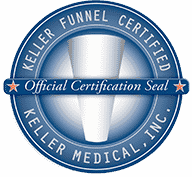Labiaplasty in Portland, OR
Labiaplasty is a cosmetic procedure that improves the appearance of the female genitalia. Some women seek this opportunity to improve their appearance and ultimately feel satisfied with their bodies, while some seek changes for physical discomfort or medical reasons. Women generally ask about labiaplasty if they have experienced changes from childbirth, friction from athletic activities, sexual discomfort or embarrassment, or hygienic problems. Labiaplasty can eliminate these issues for many women or simply enhance their self-confidence.
Why Do Women Pursue Labiaplasty?
Labiaplasty can correct both physical discomfort and emotional distress related to the vaginal area. Whether the cause is genetic or damages during childbirth, excessively large or hanging labia can cause discomfort for many women during exercises such as cycling or sexual intercourse. In some cases, they may also feel discomfort or self-consciousness while wearing certain types of clothing, such as swimsuits or tight athletic pants. In addition, large or drooping labia can cause uncomfortable chafing and friction day-to-day. These physical issues are the most common reason why women choose labiaplasty. However, some also choose labiaplasty simply for cosmetic reasons. Especially if the labia has changed in appearance after childbirth, a woman may feel dissatisfied or self-conscious. For some, a labiaplasty may also be part of a mommy makeover to address the various changes that occur in the body during pregnancy and childbirth.
The Labiaplasty Procedure
The labiaplasty procedure involves reshaping or reducing the size of the vaginal lips. A board-certified plastic surgeon, like Dr. Bohley, is the best option for this type of procedure. During this procedure, the labia minora are reduced in size and then sutured with dissolvable stitches. Surgical options are also offered for reducing the size of the labia majora if this is also a concern of the patient. A clitoral hoodectomy may also be performed at the same time, which involves reducing the size of the hood of skin covering the clitoris, which in turn further exposes the clitoris for increasing sexual stimulation.
Labiaplasty is performed while the patient is under general anesthesia with sedation. The procedure can usually be completed in an hour or two, depending on the patient’s needs.
Incision Patterns
There are two basic incision techniques that may be used for your labiaplasty. First, the trim technique involves simply removing excess or overhanging labia minora tissue, ensuring that it appears symmetrical, and closing the incisions with dissolvable sutures. This is the most common and widely used technique for labiaplasties. The wedge technique, on the other hand, involves removing a wedge-shaped piece of tissue from the thickest portion of the labia minora. This preserves a more natural appearance as a result, but the technique is less commonly used. Again, dissolvable sutures are used to close wedge incisions.
The healing process after labiaplasty using either technique is more or less the same, and in both cases, scarring is well concealed within the natural contours of the body. The correct incision pattern for your labiaplasty will depend on your particular anatomy, overall goals for the surgery, and aesthetic preferences. Dr. Bohley will recommend which option is best during a consultation.
Labiaplasty Candidates
Women who have experienced considerable labial changes or damage, like tears during pregnancy, can be ideal candidates for labiaplasty. Women who are experiencing physical discomfort while exercising, sitting, or during sexual intercourse can also benefit from labiaplasty. Though Dr. Bohley stresses that there is no standard shape or looks for a woman’s vagina, there are many women who are dissatisfied with having prominent labia. Before a labiaplasty, you should be generally healthy and, ideally, a nonsmoker. For some patients, Dr. Bohley may recommend that you wait until after you are done having children, as future pregnancies can affect your results.
Recovering from Labiaplasty
Following your procedure, you will have to abstain from intercourse for about a month. There will be swelling and tenderness that lasts for a few weeks with possible bruising on and around the labia.
You will be prescribed pain medications and antibiotics in order to reduce any risks of infection following your surgery. During the recovery period, be sure to wear loose-fitting clothing to remain comfortable. Ice packs can also be used to reduce swelling and discomfort. Dr. Bohley suggests avoiding any strenuous exercises for about three weeks. You must also avoid using tampons for the first 10 days post-surgery, however, you will need to wear a pad for a week due to minimal bleeding that may occur.
Labiaplasty FAQs
Is labiaplasty covered by health insurance?
Does labiaplasty affect sensation?
Can an OBGYN perform labiaplasty?
Does labiaplasty leave scars?
How long is recovery from labiaplasty?
Can labiaplasty cause infertility?
Can you lose feeling after labiaplasty?
How long does swelling last after labiaplasty?
What helps itching after labiaplasty?
What Results Can I Expect from this Procedure?
Since the appearance of the female genitals varies from one patient to the next, the results are dependent on the individual and their desires. Dr. Bohley’s main goal is to maintain sensitivity while achieving the desired aesthetic shape and size.
It takes about three to four months before you can see your final long-term results, but most of the healing is complete within six to eight weeks.
Whatever your reason for choosing Labiaplasty, most women regain their confidence with the youthful appearance of their labia post-surgery. Patients often find that physical comfort and their sexual experience are both improved once the excessive labial tissue has been removed.
Learn More About Labiaplasty
If you’re interested in a labiaplasty, the first step is a consultation. Dr. Bohley will answer any questions you might have about the procedure and create a custom treatment plan to improve your confidence and quality of life. To schedule a consultation with Dr. Bohley, please contact his Portland, OR office at (503) 213-9914 or visit his contact page.








